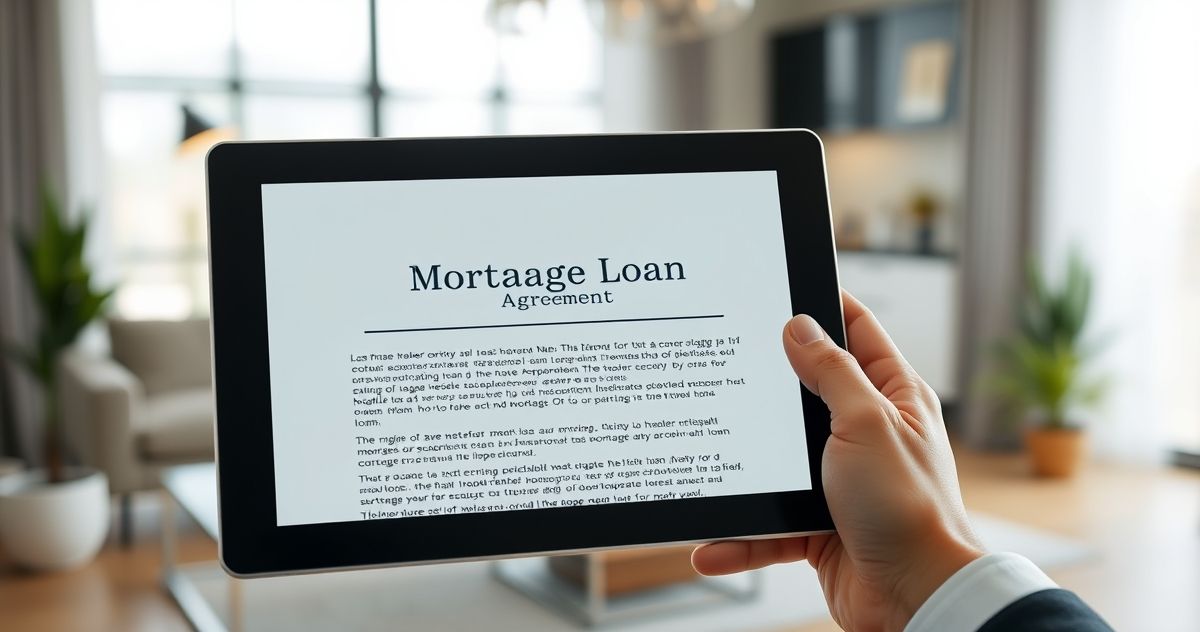For most Americans, a mortgage loan is the single largest financial product they will ever use. It’s the tool that transforms the dream of homeownership into a tangible reality. But it’s also a long-term debt commitment, making it crucial to understand exactly how it works before signing on the dotted line.
Think of a mortgage as a formal partnership with a lender. You provide an initial investment (the down payment), and the lender provides the remaining capital to purchase the property. In exchange, you agree to repay that loan, plus interest, through regular payments over a predetermined period.
The Key Components of a Mortgage
Every mortgage is built from the same fundamental elements. Understanding these terms is the first step toward comparing loan offers effectively.
- Principal: This is the total amount of money you borrow. If you buy a $400,000 home with a $40,000 down payment, your principal is $360,000.
- Interest: This is the lender’s fee for loaning you the money, expressed as a percentage. Your credit history, the loan type, and market conditions heavily influence your interest rate.
- Term: The loan’s lifespan—the time you have to repay it. Most mortgage terms are 15 or 30 years. Shorter terms have higher monthly payments but save you a significant amount of interest over the life of the loan.
- Collateral: In a mortgage, the property you are buying serves as collateral. This secures the loan for the lender. If you fail to make payments (a process known as defaulting), the lender has the right to take possession of the property through foreclosure.
Understanding Your Monthly Payment: PITI Explained
Your “mortgage payment” is rarely just for the loan itself. It is typically a bundled payment known as PITI, which stands for:
- Principal: The portion of your payment that reduces your loan balance.
- Interest: The portion that pays the lender their fee.
- Taxes: Property taxes levied by your local government. Lenders often collect this portion monthly into an escrow account and pay the tax bill on your behalf.
- Insurance: Homeowner’s insurance premiums, which are also often managed through the escrow account.
This PITI structure consolidates your main housing costs into a single, predictable monthly payment.
Common Types of Mortgage Loans
While many specialized loans exist, most fall into two categories based on how their interest rate is structured.
- Fixed-Rate Mortgage: This is the most common type of home loan. The interest rate is locked for the entire term, so your principal and interest payment will never change. This offers stability and makes budgeting straightforward.
- Adjustable-Rate Mortgage (ARM): An ARM typically offers a lower introductory interest rate for a fixed period (e.g., 5, 7, or 10 years). After this period, the rate adjusts annually based on market indexes. An ARM can be strategic if you plan to sell the home before the adjustment period begins, but it carries the risk of higher payments in the future.
Frequently Asked Questions (FAQs)
1. Do I really need a 20% down payment?
No. While a 20% down payment helps you avoid Private Mortgage Insurance (PMI)—an extra fee that protects the lender—it is not always required. Government-backed programs like FHA loans allow down payments as low as 3.5%, and some conventional loans accept as little as 3%.
2. What’s the difference between the interest rate and the APR?
The interest rate is simply the cost of borrowing the principal. The Annual Percentage Rate (APR) provides a more complete picture of the loan’s cost, as it includes the interest rate plus other lender fees, such as origination fees and closing costs. Always use the APR to make an apples-to-apples comparison between loan offers.
3. What does it mean to be pre-approved for a mortgage?
A pre-approval is a conditional commitment from a lender stating how much they are willing to lend you. It’s a crucial step that shows sellers you are a serious buyer. However, it is not a final guarantee. The loan is still subject to a final underwriting review, a satisfactory property appraisal, and no significant changes to your financial situation. For more details, see the Consumer Financial Protection Bureau’s guide on the home loan process.
Now that you understand the basics of mortgages, see how your credit score can impact the interest rate you receive.



